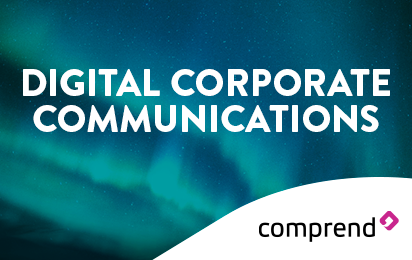
FACING THE FUTURE OF HR COMMUNICATIONS
In the communications industry, change is the only constant. Whether through digital innovation, social interaction, workforce engagement or new methodological approaches, communication is ever-evolving, taking its employees on a continual journey of discovery. It is therefore of little surprise that a whitepaper published by employee communication and marketing agency Caburn Hope indicates that firms willing to embrace predicted industry changes and enhance employee engagement in new ways are the firms likely to excel in a new technology-driven future.
Identifying five key trends, the ‘Future of HR communications’ report recently published by Caburn Hope is targeted towards what the agency describes as ‘HR innovators.’ The work recognises the continual need for innovation in the communications industry – and the impact of this on a firm’s employer brand. Charting the importance of contextual personalisation, gamification, corporate narrative, wearables, and virtual/augmented reality, Caburn Hope argue that ability of an organisation to attract and retain employees largely hinges on its ability to combat the global skills deficiency and willingness to invest in tools which lead to strong employee engagement.
Caburn Hope says, “We need to consider a strategy for the future, the speed of transition between technological advancements is getting faster and closer together making it vital business sense to plan ahead. A strategy to adopt technology that is both scalable and one that enhances user experience will be a critical ingredient for future growth.”
Described as “Using real-time and historical data to pinpoint where a person is in the employee lifecycle and help shape tailored communication journeys,” ‘contextual personalisation’ sees companies obtain as much information about their employees’ journeys as is relevant. While, says Caburn Hope, this approach relies on employees being perceived as customers, this isn’t a bad thing – strong employer brand management approaches indicate employee expectation and happiness has a direct benefit to company retention and income.
Similarly, ‘gamification’ and ‘corporate narrative’ are two buzzwords-cum-strategies which if embraced can yield truly positive results. “Mobile, social media, analytics and location sensors are already prevalent in today’s landscape,” says Caburn Hope, “and it’s likely we will see more end-user benefits in terms of how companies can use gamification to increase engagement with their HR initiatives.” As for corporate narrative, or ‘storytelling’ as it has come to be known in business lexicon, its historic roots and universal appear see it transcend language barriers the worldover.
Intrinsically bound up in a workplace employer value proposition (EVP), “Applying a compelling and relevant story [gives] clarity on ethos, purpose, vision and values – so people can align their own behaviours with business,” says Caburn Hope.
For many communicators, embracing workplace technology is already paramount; its importance is set only to grow throughout the industyr. Both ‘wearables’ and ‘virtual/augmented reality’ are cited by Caburn Hope as leading to a new era in connected office environments. Wearables can form part of a firm-wide employee communication strategy; VR and AR can be integrated into apps to help bridge the gap between static and dispersed workforces. Correct implementation can also lessen health and safety fears for companies operating in high-risk environments, and ease the onboarding process for new recruits.
The future of HR communications and its potential impact on the employer brand is unknown. Reports such as the findings produced by Caburn Hope point towards trends of which communicators are already aware; recognising and implementing such strategies could be the difference between an engaged and disengaged workforce. Says Caburn Hope, “Building a robust engagement model has never been more vital for future-proofing businesses and employer brand reputation.”


